By Llora Coatrischie
Download “Understanding the Different Pathways to Transgender” as a PDF file
Do you believe that men who fetishize the female body need and deserve the same types of social support as women and men who have been hurt by homophobia, harassment, and violence?  As girls and women who have been harshly criticized and degraded for breeching the expectations of traditional femininity? As victims of childhood sexual abuse who have come to dissociate how they feel in their bodies? If you feel that these very distinctive experiences conjure unique social solutions, then it is vital to think critically about how very different types of people with different needs and experiences come to embrace transgenderism. It is crucial to ask how transgenderism fails to address diverse social problems. It is important to consider how the growth of transgenderism creates new harms and constraints for people who want freedom from traditional gender roles.
As girls and women who have been harshly criticized and degraded for breeching the expectations of traditional femininity? As victims of childhood sexual abuse who have come to dissociate how they feel in their bodies? If you feel that these very distinctive experiences conjure unique social solutions, then it is vital to think critically about how very different types of people with different needs and experiences come to embrace transgenderism. It is crucial to ask how transgenderism fails to address diverse social problems. It is important to consider how the growth of transgenderism creates new harms and constraints for people who want freedom from traditional gender roles.
The Different Pathways to Transgender
Transgender individuals have become an increasingly visible and vocal class among the LGBT spectrum. But people come into transgenderism for very different and sometimes contradictory reasons. This truth gets lost on liberal supporters and allies who, with often seemingly very good intentions, just want to support sexual minorities. And the experiences of women who transition to male and men who transition to female are dynamically different as are the effects of these changes. Transgenderism is not a sexual minority sui generis. It has become, over time and through much effort, a widely embracing ideology, that presents a common solution to a diverse range of very different social problems. But poorly understood problems are rarely helped by radically transformative solutions that sweep differences and complexities under the rug. I invite you to consider more carefully why many different types of social experiences have led different individuals to adopt transgenderism as a solution and how this most often fails to really address the root of those social problems.
The term transgenderism was first used by a psychiatrist, John Oliven, in his 1965 book Sexual Hygiene and Pathology to describe males for which cross-dressing was “not enough” because the desire was so strong in them to have female bodies. He notes that because transsexualism includes the desire to express femininity, the term transgenderism is more explanatory. ‘Transgenderal’ was then used in the 1970s by advocate Virginia Prince to distinguish individuals who felt drawn to dress as or act as another gender from ‘transsexuals’ who sought medical intervention to have a sex change. Much messiness and imprecision in terminology ensued over the 1970s, 1980s, 1990s and into today, where debates are ongoing about what the term transgender means and whether it includes medical and surgical intervention. Some prominent organizations say no. Transsexual activists would like to re-establish this boundary that once governed this distinction. But the transgender identity has also come to encourage the phenomenon the term was once innovated to challenge: the biomechanical re-engineering of the body. Biomedical transitioning subjects individuals to a lifetime of the medical management of their gender identity, while increasingly creating a medical imperative that gender is in fact a psychological condition of individuals that can be ‘fixed’- something LGBT activists long worked to resist.
Trans history is deceptive in two important ways. First, as trans supporters now look back through history and attempt to recategorize many different types of resistance to repressive sex roles as early evidence of ‘transgender’- even long before this category existed or could hold significance, they erase lesbian and gay history. Second, it is important to understand the diverse range of experiences that lead very different individuals to pursue transition and the dumping of anyone and everyone who was gender-nonconforming into the ‘trans’ category, essentializes a diverse people without their permission. Further, this one-category approach also fails to address some of the serious social sufferings that drive different individuals to adopt life-changing treatments. It imposes dangers for children and adults who deal with real suffering and for whom the option presented to them is increasingly to change their bodies. Here I will explore several pathways: oppressive gender roles, heterosexism and homophobia, body objectification, and I will also identify broad social forces driving individuals to increasingly adopt transgenderism as a solution: the political economy of big pharma and the ever expanding social spaces in which young people are prompted to claim a gender identity different than what they were assigned at birth.
Oppressive Gender Roles
One of the reasons many individuals feel compelled to transition is because they have long felt that the sex roles assigned to their bodies don’t properly ‘fit’ with their personality. Psychiatrists, psychologists, and medical professionals address the ‘symptoms’ signaling an opportunity for transgender interventions under the umbrella term of ‘gender dysphoria’. The American Psychiatric Association defines this condition as being comprised of one or two states of discomfort.
Gender dysphoria involves a conflict between a person’s physical or assigned gender and the gender with which he/she/they identify. People with gender dysphoria may be very uncomfortable with the gender they were assigned, sometimes described as being uncomfortable with their body (particularly developments during puberty) or being uncomfortable with the expected roles of their assigned gender (APA 2016).
Imagine if this experience were always cause for psychological diagnosis: “being uncomfortable with the expected [social] roles of their assigned [social category].” Being uncomfortable with racism, classism, and xenophobia would also be cause for psychological intervention. There would be no cause- ever- for human rights or social movements against categorical discrimination. No one could ever be uncomfortable with the ways they were treated in society because of categories given to them at birth. Don’t like the ways you are treated as inferior because of your race? Perhaps you have racial dysphoria. Are you uncomfortable with the class status of your birth family? You must have class dysphoria. Does your citizenship status not suit how you really feel in this society? For sure, you have citizenship dysphoria. If this logic followed through with every social status ascribed at birth, there would be no social change. There would be no social diversity. In fact, we would live in a cultural autocracy that does nothing to challenge the unnecessary inequalities between and among these different categories. How has this come to serve as the basis for diagnosing transgenderism as a psychological problem?
Feminists and lesbian and gay activists have long challenged sex and gender roles, arguing that an individual’s gender identity is shaped by socialization experiences but open to change. Fierce women throughout history have transgressed the gender limitations imposed on them in creative and powerful ways, from one of the few but powerful female pharaohs Hatshepsut, to the surreptitious cross-dressing of US colonist Deborah Sampson who enlisted to fight in the revolutionary war. And historical and cultural differences in what is expected of different genders varies, sometimes wildly, over time and across cultures. The high heeled shoe was once only worn by men in the Persian army, later by male European aristocrats, and later men of all classes wanted to wear them, long before women did.
 Today, it might be acceptable in some homes for a child to express a variety of interests and preferences in dress, play and activities early on, whereas in other families or communities it might be strongly breaching social norms. That these gender roles are assigned to us based on sex characteristics have come to make us feel as if there are personality traits intrinsically attached to different bodies. For the now famous Jazz Jennings, who started transitioning as a child, the insistence of feeling in a girl’s body was wholly linked to dress and play and association with other little girls’ dress and play at first. Only later came the feeling that Jazz’s body didn’t match that very distinctive gendered grouping. Jazz learned little girls have particular parts and so, wanting to be a little girl, Jazz then soon wanted also the body to match. In plenty of other families, little boys and little girls do not encounter a world where particular types of dress and play are so rigidly assigned to one gender or another and thus the association of interests with a particular body is not ingrained.
Today, it might be acceptable in some homes for a child to express a variety of interests and preferences in dress, play and activities early on, whereas in other families or communities it might be strongly breaching social norms. That these gender roles are assigned to us based on sex characteristics have come to make us feel as if there are personality traits intrinsically attached to different bodies. For the now famous Jazz Jennings, who started transitioning as a child, the insistence of feeling in a girl’s body was wholly linked to dress and play and association with other little girls’ dress and play at first. Only later came the feeling that Jazz’s body didn’t match that very distinctive gendered grouping. Jazz learned little girls have particular parts and so, wanting to be a little girl, Jazz then soon wanted also the body to match. In plenty of other families, little boys and little girls do not encounter a world where particular types of dress and play are so rigidly assigned to one gender or another and thus the association of interests with a particular body is not ingrained.
Writer and advocate Lierre Keith has shared her thoughts on how this issue poses a threat to really overcoming gender inequalities. She notes
I have spent a lot of time reading the words of teenage girls who think they are trans. It has broken my heart… In their own words this is what makes them transgender
I like skateboarding.
I like math.
I want short hair.
I don’t want to shave my legs.
I hate my body.They want physical freedom. They long for intellectual pursuits and bodily integrity. They want to be human beings, not objects.
The American Pediatric Association strongly discourages the medical management of childhood gender identities. The effects of the biochemical re-engineering of children’s underdeveloped bodies, they caution, can cause irreparable lifelong harm, and they argue that the experience commonly considered ‘gender dysphoria’ among children often changes as children mature.
Gender dysphoria may be one form of dissociation, but it is being confused with other forms of dissociation and more importantly, its causes as likely deeply social, are being overlooked. Severe childhood abuse, for example, creates dissociation that can look like and manifest as gender dysphoria. To this concern, it is important not to lump together all the many different forms of what psychologists have identified as ‘dissociation’ including what was formerly identified as female ‘hysteria’ (only removed from the Diagnostic and Statistical manual of the American Psychiatric Association in 1980!), or to confuse these with a gender identity disorder, lest individuals fail to gain the psychological support that could really help them for serious experiences of suffering. One study of female to male transitioners found that 60% of the interviewees reported one or more of several types of severe child abuse. For clinicians to offer sexual body modification and not treat underlying forms of trauma could be a risky, ethical, and damaging misstep. Feminists have argued that omissions of histories of incest from those diagnosed with and treated for gender identity disorder have harmful effects on both those individuals and all others who have been victimized. Clinicians with long-standing experience treating gender dysphoria have also begun to rethink how many other serious psychological disorders are being lost to this quick catch-all, consumer driven diagnosis. The trans movement is encouraging these diagnoses, and individuals are walking into clinics requesting them.
Furthermore, too little attention is given to the different experiences of young women in coming to experience ‘dysphoria’. As one detransitioned young woman explains, she began to feel dysphoria as her body was developing ahead of other girls. She describes the top surgery in which she removed both her breasts as initially a “dream come true” but not too long afterward, she began to feel quite differently about her transition. “After around 18 months, I began to realize I’d been changing my gender for all the wrong reasons- it wasn’t because I wanted to be a boy, it was because I felt uncomfortable with my female body”.
Heterosexism and Homophobia
Another very common pathway to transgenderism is negative experiences with heterosexism and homophobia.
Iran’s state-supported transgender surgery for homosexuals represents perhaps the most extreme example of politically-imposed heterosexism. As an Islamic state, Iran is formally opposed to both homosexuality and nonconformity with traditional gender roles. By way of historical idiosyncrasy, namely the high-level connections of one repressed transsexual, Iran has had a ‘fatwa’ policy in place since 1986 that allows surgeries to remedy what would otherwise be homosexuality. Homosexuality is diagnosed as a ‘gender identity disorder’ and an official diagnosis leads to a government supported sex change. This in turn upholds the laws against homosexuality enforced by the Islamic state, otherwise punishable by death. As one Iranian male-to-transwoman shares of her experience leading her to the sex change, she felt “alone against all the social norms that dictate to you what you should do, what you should wear, how you should live.” For adults who have realized they are homosexual, transsexual surgeries are a promising option for a freer life. As a PBS documentary on the topic recounts, the country’s most prominent sex-change surgeon performs more sex-change operations in a year than the entire country of France does in 10 years.
A state-sanctioned mandate may represent the far extreme of heterosexism, but homophobia in a society widely offering surgical solutions also drives people with same sex attraction to elect trans surgeries as a reprieve from the constant harassment of a disapproving society. (Please note: although not all trans individuals pursue heterosexual relationships- it is common for men to become women only to pursue relationships with women under the guise of being ‘lesbians’. This is an important distinction I will discuss below and a point of great contention for lesbian feminists). Research on adolescent homophobia and the testimonies of detransitioned individuals suggest that transgenderism is often seen as an easy solution for those struggling with the internalization of homosexual stigma.
This trend poses a dangerous dilemma for same sex relationships. US Lesbian and Gay activists worked ardently to remove homosexuality from the American Psychiatric Association’s list of mental illnesses in the Diagnostic and Statistical Manual in 1973. They fought to make this change because so many homosexuals do suffer emotionally and psychologically from the incredible pressure to be heterosexual, but the solution, they believed then and we support now, is not in changing the individual away from his sexual orientation, but in building up social support to respect it.
This trend poses a dangerous dilemma for same sex relationships.
It is therefore not surprising that lesbian and gay individuals can understand why others would consider transgender operations as an escape from the isolation and stigma of a homophobic society. Critically-acclaimed artist Alison Bechdel responds to an interview question on her gender and orientation struggle growing up, “I think the way I first understood my lesbianism, before I had more of a political awareness of it, was like: Oh, I’m a man trapped in a female body. I would’ve just gone down that road if it had been there.” But Bechdel found a vibrant lesbian community in her early twenties, and later explains of her experience in building a social movement for lesbian and gay rights, “But I’m so glad it wasn’t, because I really like being this kind of unusual woman. I like making this new space in the world.”
All three women contemplating undergoing transgender surgeries in the documentary Boy I Am, were self-identified lesbians who later turned trans. When discussing their decisions, they give examples of social experiences that made them ‘feel as if they are men trapped in female bodies’. They share that the reasons for their feelings are that they love other women and prefer men’s freedoms. They talk at length about being isolated as women who do not identify with typically feminine tastes. One of the women interviewed explained of her wavering thoughts about going through with biomedical reengineering, “I don’t even know that I’m so interested in having a deeper voice and passing male as I’m just not interested in living that experience any more”. By “that experience” she explains the common and frequent social confusion when others approach her as male and then hear her speak with a feminine voice.
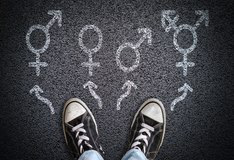 Gender Studies scholar Judith Jack Halberstam, also speaks extensively throughout the film on the complexities of the social forces shaping the female-to-male transition. Although supportive of individuals embodying a gender they choose, Halberstam expresses concern that at a young age, individuals, especially those raised as girls, have not yet experienced their body and their sexuality fully enough to make an experientially informed decision. She argues that “no female gets through adolescence feeling good in her body”. She also states that were she given the opportunity at the age of 19, feeling vulnerable and without a full range of sexual experiences, she would have perhaps enthusiastically opted to transition, though she too later shares she would not select transition now, knowing her body as she knows it with greater maturity.
Gender Studies scholar Judith Jack Halberstam, also speaks extensively throughout the film on the complexities of the social forces shaping the female-to-male transition. Although supportive of individuals embodying a gender they choose, Halberstam expresses concern that at a young age, individuals, especially those raised as girls, have not yet experienced their body and their sexuality fully enough to make an experientially informed decision. She argues that “no female gets through adolescence feeling good in her body”. She also states that were she given the opportunity at the age of 19, feeling vulnerable and without a full range of sexual experiences, she would have perhaps enthusiastically opted to transition, though she too later shares she would not select transition now, knowing her body as she knows it with greater maturity.
With so many young men and women who have de-transitioned recounting experiences of homophobia and repressive sex roles factoring into their decisions, the question has been raised if increasing pressures to transition should not also be considered a human rights issue: the cultural and biomedical erasure of young butch women and effeminate men.
With so many young men and women who have de-transitioned recounting experiences of homophobia and repressive sex roles factoring into their decisions, the question has been raised if increasing pressures to transition should not also be considered a human rights issue: the cultural and biomedical erasure of young butch women and effeminate men. In one gender clinic in London, there has been a 4000% increase in the number of girls seeking treatment for transgenderism, with parents supporting their requests for double mastectomies. Sheila Jeffreys explains it used to be only adult men who transitioned biomedically. Now, she states,
95% of the girl children who persist in thinking they’re boys at the age of sixteen are same sex attracted. So they’re all little lesbians being viciously converted by terrible forms of treatment at a very young age. It should be a scandal, a human rights scandal at the UN- everyone should be concerned about this.
Embodied Objectification
The experiences of limiting gender roles and homophobia are very different pathways to trans. So too is the increasingly open embrace of hypersexualized, objectified transgender bodies. By far, the most visible and well-known transgender celebrities are men who have biomedically transitioned to embody what has long been stereotypically considered ‘sexy’ female bodies. They are thin and curvy with perky breasts, wear revealing form-fitting clothes and are slathered in make-up, fingernail polish and hair extensions. To celebrate these presentations as displays of idealized femininity contradicts women’s autonomy over defining what makes a woman beautiful. Feminists are deeply concerned that supporters of trans-rights have failed to call out the misogyny and toxic masculinity of some of the movement’s most visible public advocates. Furthermore, in a world with rampant rates of violence against women, sexual assault and sexual harassment, feminists find it gravely troubling that men who desire the experience of becoming a sexually appealing female do so according to misogynistic standards. We must ask the question of whether these men are contributing to and not working against rape culture.
Furthermore, in a world with rampant rates of violence against women, sexual assault and sexual harassment, feminists find it gravely troubling that men who desire the experience of becoming a sexually appealing female do so according to misogynistic standards. We must ask the question of whether these men are contributing to and not working against rape culture.
In her now iconic documentary on how media images shape our relationships with our bodies, sociologist Jean Kilbourne has created and recreated Killing Us Softly four times from 1979 to 2010. Her presentation draws on forty years of research on the toxic culture of objectified bodies. Kilbourne’s presentation compellingly challenges this body-object environment that our minds swim in on a daily basis, the print and visual advertisements that follow us through urban and now digital landscapes. Psychologists suggest that we subconsciously retain and are influenced by up to 92% of our consumption of these images. The toxicity that Kilbourne explores is characterized by a culture that celebrates the objectification of the body– what she considers a cultural dismemberment of bodies, so that we now think of ourselves as a collection of parts, all of which are moveable and open for revision to near or completely impossible ideals. That women have carried the brunt of this objectification in a culture aimed at male pleasure is a theme that has animated Kilbourne’s research since she first began in the 1970s. Women are increasingly depicted as objects for male enjoyment- a woman’s body is a beer bottle; it’s a football; it’s treated as interchangeable and widely available to male sexual exploits. Kilbourne highlights a collection of designer clothing ads celebrating child porn, with adult females scantily clad and being photographed by older, anonymous male figures who are about to enjoy them. Another one pokes fun at a woman dressed in designer clothing about to run from a stranger in a dark alley. That men have become increasingly folded into this body-objectification- modification ideal is an expanding trend she reports on in the 2000s. Men’s bodies, too, are increasingly hypersexualized and depicted in parts and as objects women should sexually enjoy.

Isaac Preiss shares his story with PBS as the first child to transition, challenging the false narrative of “born in the wrong body.” See What Makes You Your Gender?
Never are transgender surgeries or hormones offered to improve character, expand intelligence, or grow empathy or introspection.
Some research studies have linked transgender operations to males with histories of fetishized cross-dressing and the growing popularity of trans-porn. One former male turned female (who then de-transitioned after many years as a high-profile fashion designer) likens his change to the ‘ultimate male fantasy’ that enabled him the sexual power to attract other high profile males, although he ultimately now (and before his transition) identifies as heterosexual. A wife of a former male transitioned to female, who publishes her story under the pen name Sharon Thrace in the anthology Female Erasure, shares how her husband became attracted to transition after developing an enduring addiction to ‘transporn’, where sexual fantasy comes from the mix-up of body parts across various types of bodies. She describes her husband’s transitioning as the ultimate expression of masculine privilege- that at midlife you can decide you want to wear lipstick and heels. She responds: “To believe in ‘gender identity’ at all is a very masculine idea. Women don’t go around ‘feeling like women’ – we feel like people, and that’s all the more poignant as we navigate a world where we are treated like children.”
One Rolling Stone issue covers the story of a male to trans rock singer who shares his final liberation in no longer having to hide his cross-dressing in women’s lingerie by deciding to transition. His former wife points out the ironic and offensive double standard when her now ex-husband turned female is depicted topless in Rolling Stone when they do not print topless women born women. She goes on to explain that they botched her part of the interview and what she wanted to share about the experience, although her ex-husband, now transitioned, was given full respect in directing the story and in posing in the nude.
 Other male to female transgender individuals fantasize about embodying a women’s body and then ‘becoming lesbian’ and having sex with other women, when they have their male genitalia intact. One young de-transitioner, a woman who had transitioned to male and then de-transitioned back to female, shares her story of being involved in a trans social circle where young male to trans individuals were insisting that young women who rejected them sexually were ‘transphobic’ or ‘transmisogynistic’ or using their ‘cis privilege’ to exclude biological males who identified as trans-women and wanted to sleep with lesbians. Women would sleep with these newly proclaimed ‘identified as female lesbians’ to prove they were not biased, even though those women had identified as only attracted to other women. After witnessing the rape of a close friend under these conditions, Max Robinson explained her shock of how easily the perpetrator changed his gender once again, exculpating himself from the rape. She recounts,
Other male to female transgender individuals fantasize about embodying a women’s body and then ‘becoming lesbian’ and having sex with other women, when they have their male genitalia intact. One young de-transitioner, a woman who had transitioned to male and then de-transitioned back to female, shares her story of being involved in a trans social circle where young male to trans individuals were insisting that young women who rejected them sexually were ‘transphobic’ or ‘transmisogynistic’ or using their ‘cis privilege’ to exclude biological males who identified as trans-women and wanted to sleep with lesbians. Women would sleep with these newly proclaimed ‘identified as female lesbians’ to prove they were not biased, even though those women had identified as only attracted to other women. After witnessing the rape of a close friend under these conditions, Max Robinson explained her shock of how easily the perpetrator changed his gender once again, exculpating himself from the rape. She recounts,
When she let our mutual friends know, we both assumed they would have her back; after all, they referred to their apartment as a safe space for rape survivors. But instead, her rapist changed his pronouns on Tumblr, claimed to have schizophrenia, and then said that he couldn’t possibly have raped her, because of the power dynamics between a “cis” woman and a transwoman. He moved back to LA a few months later, without ever taking any steps towards transition. When he got there, he told his old friends he wasn’t schizophrenic or trans anymore.
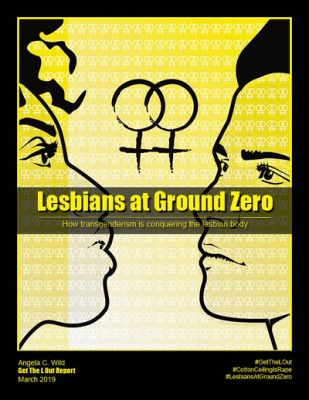
The Lesbians at Ground Zero Report documents survey studies of how lesbians have been sexually harassed and degraded by transactivists.
Feminists and behavioral scientists have advocated against the lumping of males suffering from ‘autogynephilia’, or the sexual fantasization of embodying a female body, into a general gender dysphoria, because it washes over a serious distinction that should be made between these males, motivated to become transgender by their sexual fantasies, and other seeking relief from homophobia or restrictive gender roles.
When so many vocal transactivists are born male then become an embodied objectified female, it now begs the question where the role of socialization comes into play in trans-politics. Why do liberal supporters not see the clear differences in experiences of transitioners who were born male versus those born female? Who are the policies transactivists promote really serving, in a world where men (especially heterosexual men) still enjoy an inordinate amount of social power and privilege and harassment and violence against women is so endemic?
Social Forces Shaping the Pathways
Choosing to be transgender is a poor solution to the problem of constricting gender roles, heterosexism and homophobia, and objectification. Most people who claim trans identities are choosing to be trans from one of these pathways. But the choice to become transgender is also partly a result of runaway social forces including the medical-pharmaceutical industry and the growing, socially contagious youth fashion of claiming an individualized gender identity. The trans movement is sweeping up young people who may suffer not from gender identity, but from a number of different social sufferings, or unrelated psychological disturbances. Many others simply reject traditional gender roles and are overwhelmed by the message that the only way to do that is to transition their bodies.
These changing social trends mean that biomedical transitions are on the rise. For advocates of transgenderism, ‘access’ to these biomedical services has become a focus. But if one stops to ask, who benefits from this expanded access, it is hard to conclude that transgender individuals experience the greatest benefits. In terms of profits, transgenderism is seen as a frontier global market for pharmaceutical and medical industries, that stand to profit enormously from growing numbers of individuals who will rely on them lifelong for drugs and other interventions.
In terms of profits, transgenderism is seen as a frontier global market for pharmaceutical and medical industries, that stand to profit enormously from growing numbers of individuals who will rely on them lifelong for drugs and other interventions.
As a wave of gender-fluidity politics washes over the cultural landscape, the push against the restrictions of gender categories has given way to the pull of the physiologically managed transfer from one category to another. In both instances, this has created new constraints on the ability of individuals to develop personalities outside of rigid gender categories. A whole industry is quickly emerging and expanding on a global scale to create the demand for its supply. Where queer ‘gender creativity’ activism had once advocated for flexibility in the coupling of gendered behaviors with sex, now trans activists advocate for the flexibility of sex on bodies, leaving gender and sex tightly coupled. Trans advocates appear to be asking for new freedoms when, instead of challenging limited concepts of gender, they are deepening one path as a solution to problems that ultimately cannot be fixed by drugs, surgery, or changing one’s outward appearance.
The Market-driven Approach of Big Pharma and the Medical Industry
The growing practice of biomedical transition is managed by a neoliberal profit-seeking medical industry. This is one part of the reason why transactivists fight so ardently for employer-funded ‘healthcare access’- they realize the high costs of getting transgender surgeries. If employers could pay for hormonal injections, electrolysis, and other plastic surgery operations, then the practice would be more widely accessible. That medical practice is governed by institutional and economic interests, however, is a fundamental part of the transgender surgery story.
Women’s bodies have long been the site of pharmaceutical and technological explorations. Pharmaceutical companies were the force pushing doctors to prescribe women hormones for treatment of late-in-life changes, such as lowered voices and the growth of facial hair. The medical industry framed these changes as a deficiency that women experienced in the production of the chemicals that made them feminine, a decline that led to the contraventions of expected gendered presentations for young women. The thinking was propagated that women would benefit from taking chemically produced (or animal sourced) estrogen. When trials showing these hormones to be carcinogenic finally gained widespread recognition among doctors (in the early 2000s), the routine use of estrogen in aging women started to wane significantly. Historical research into the practice revealed that this knowledge, of the carcinogenic and also cardiovascular risks associated with hormone use, had been produced three decades earlier, shortly after the practice became routine medical prescription. It took a shift in institutional culture to acknowledge this research and openly discuss it. The pharmaceutical industry profited from this longstanding diagnostic trend, despite ample evidence suggesting the drugs were doing more harm than good. For the marketing departments of big pharma, the transgender industry must look like the new cash cow.
Climbing suicide rates among transgender teens have prompted some to inquire into the psycho chemical effects of taking hormone blockers and/or hormones, as these drugs do alter the chemicals of the brain that regulate emotions.
Deleterious health effects have been researched as linked to medical interventions on transgender individuals. A battery of risks associated with transgender operations range from biophysical complications to psychological side effects. Studies have linked greater heart attack risk for both transgender women and transgender men on hormonal therapy. At Fenway Health Clinic, females taking testosterone therapy sign a consent form acknowledging possible permanent baldness, facial and body hair growth, and sterility. Risk is increased for diabetes, endometrial and breast cancer, liver damage, heart attack, and stroke. Climbing suicide rates among transgender teens have prompted some to inquire into the psycho chemical effects of taking hormone blockers and/or hormones, as these drugs do alter the chemicals of the brain that regulate emotions.
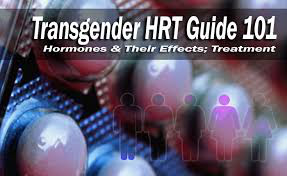 In a society where acceptance of transgender as a naturally occurring identity is normalized, it takes only a few months in a counselor’s office sharing real experiences of social stigma or bodily discomfort to get a prescription for hormones and then other surgical interventions down the line. In one personal testimony entitled, “Transition Caused More Problems than it Solved”, a man who de-transitioned after 20 years of living as female explains the experience of being “rushed into transition by well-intentioned but ultimately misguided” healthcare and psychological authorities. Psychologists and other medical professionals that hold grave concern about the deeply social push toward transgender interventions for problems of other psychosocial causes, now find themselves increasingly isolated for raising uncomfortable truths.
In a society where acceptance of transgender as a naturally occurring identity is normalized, it takes only a few months in a counselor’s office sharing real experiences of social stigma or bodily discomfort to get a prescription for hormones and then other surgical interventions down the line. In one personal testimony entitled, “Transition Caused More Problems than it Solved”, a man who de-transitioned after 20 years of living as female explains the experience of being “rushed into transition by well-intentioned but ultimately misguided” healthcare and psychological authorities. Psychologists and other medical professionals that hold grave concern about the deeply social push toward transgender interventions for problems of other psychosocial causes, now find themselves increasingly isolated for raising uncomfortable truths.
The pharmaceutical industry has consistently been the largest industry to lobby Congress, clearly demonstrating it‘s political agenda. Just as pundits charge that the industry and its close collusion with lawmakers is “feeding the Opioid crisis”, it is now feasible to say it is also “feeding the transgender scramble”, as a growing number of supporters argue for expanded ways of getting these drugs and surgeries to transgender patients and pharmaceutical companies donate millions of dollars to LGBT causes. Who benefits from all these high cost lobbying ventures? Investigative reporting traces the money to “exceedingly rich white men and women”.
A ‘Social Contagion’ Effect and the ‘Gender Revolution’
Individuals who may have been distantly supportive of transgender surgeries, or moderately curious about the process of socially transitioning one’s body into a new gender identity, are going to be much more likely to do so the more those around them are doing so, and the more transitioning becomes visible and accepted as a way of confronting the limits of traditional gender roles.
Lisa Littman’s 2018 publication in the journal Plos One, “Rapid-onset gender dysphoria in adolescents and young adults: a study of parental reports”, documents a process of social contagion among young persons who transitioned following one or several close friends’ transition. Littman’s study queried 256 parents recruited through online forums for parents concerned about their children’s gender transition. It entailed a 90-question survey and concluded that,
“The onset of gender dysphoria seemed to occur in the context of belonging to a peer group where one, multiple, or even all of the friends have become gender dysphoric and transgender-identified during the same timeframe. Parents also report that their children exhibited an increase in social media/internet use prior to disclosure of a transgender identity.”
Statistics collected in the study indicated that 82.8% of the children reported on were female at birth with a median age of 16. In 36.8% of friendship groups, all members of the group transitioned.
Littman’s study was initially publicized and celebrated on Brown University’s webpage then immediately taken down, following staunch criticism on the part of transgender activists who felt that it undermined trans youth. The journal later reviewed the methodology again, and found it sound- there was no scientific or methodological basis for the criticism of transactivists. Further, these findings are corroborated by several of the testimonies of the youth interviewed in the documentary Growing Up Trans. The children interviewed in this PBS Frontline documentary share that they learned about trans identity through online forums like Tumblr and Youtube videos and other kids at school. Testimonies of de-transitioned youth also explain their transition experience as one of rapid-onset and social influence of peers.
Contagion also affects parents who may be distressed that their children do not conform to parents’ expected gender roles. Parents can easily find resources online encouraging them to consider biomedical transition for their children’s bodies as a solution and it is much more difficult to find support for questioning transgender dogma. In a documentary on the controversy over gender dysphoria treatments for children, Transgender Kids: Who Knows Best?, one father of a male to female transitioner expresses relief that after finding one of over forty camps for transgender children in the US, he could now look at his child and not have to be uncomfortable that his boy “ran like a girl”. Now he could accept that his child acted like a girl, and has the body to match.
In their online video discussion “Detransition Q &A”, the four young detransitioned women who recently formed the group Pique Resilience Project discuss their personal paths to transitioning. Answering questions like, “were you 100% positive about transitioning?” and “did you have any doubts?”, the women in the panel admit insisting to their parents they were sure they were trans and medical interventions would provide urgently needed relief. Yet they each acknowledge now that they were not actually sure about wanting medical interventions.
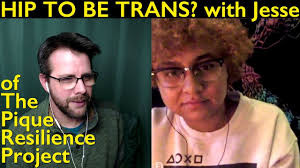 One presenter, Helena, age 20, describes transition as a “forbidden fruit” that she could not let go of, and Jesse, age 20, describes the feeling of being “swept up” in the need to “prove oneself as authentic” and a need to “feel validated”. Dagny age 22, admits she explicitly rejected accounts of transitioning regret because they were sent to her by her mother. Chiara, age 20, identified as trans between the ages of 16 and 19 and describes her early experience identifying as trans as being thoroughly characterized by repression. She too rejected multiple accounts and videos of detransitioner testimonies sent to her by her mother, who has since gone on to start an online support group for parents of teens considering transition, questioning transition or contemplating detransition, 4th wave now. Helena agrees, summing it up that “I think a big theme for all of us is the repression of doubts” and goes onto to describe how she severed relationships with friends who “desisted” from transgender identity. Chiara adds a reflection on the experience of getting shunned, “as soon as you move away form the trans community, they call you a TERF, or they call you a traitor or a fake”, all panelists nodding in agreement about the cult-like behavior of inclusion and exclusion moving into and out of the trans community.
One presenter, Helena, age 20, describes transition as a “forbidden fruit” that she could not let go of, and Jesse, age 20, describes the feeling of being “swept up” in the need to “prove oneself as authentic” and a need to “feel validated”. Dagny age 22, admits she explicitly rejected accounts of transitioning regret because they were sent to her by her mother. Chiara, age 20, identified as trans between the ages of 16 and 19 and describes her early experience identifying as trans as being thoroughly characterized by repression. She too rejected multiple accounts and videos of detransitioner testimonies sent to her by her mother, who has since gone on to start an online support group for parents of teens considering transition, questioning transition or contemplating detransition, 4th wave now. Helena agrees, summing it up that “I think a big theme for all of us is the repression of doubts” and goes onto to describe how she severed relationships with friends who “desisted” from transgender identity. Chiara adds a reflection on the experience of getting shunned, “as soon as you move away form the trans community, they call you a TERF, or they call you a traitor or a fake”, all panelists nodding in agreement about the cult-like behavior of inclusion and exclusion moving into and out of the trans community.
Another detransitioned woman, Faye, discusses her personal experiences of the intersection of gender and race politics. As a beautiful and big, Black woman, Faye never felt that her attractions for woman were a possibility she could pursue. Faye notes several early experiences of bullying and family rejection influencing her coming into a trans identity. Again, she points to online communities strongly swaying her own internal dialogue. She describes reading accounts online and thinking, “you know, maybe that’s me too”. In reflecting now on what was going on inside of her and other sisters that have also since detransitioned, Faye shares three things she feels commonly drive young women to transition, “the decision to be a boy or a man, whatever that means, was a result of trauma associated with our female body, internalized homophobia, because many detransitioned women are either bisexual or lesbians, and three, internalized misogyny…the hatred of women.”
Perhaps one of the grossest obstacles to critically transforming harmful sex roles is created by an explosion of trans-therapists who shuttle anyone questioning traditional gender roles into transition. A quick survey of what a youth questioning their own identity might find online reveals a lot of pointed encouragement to merge a range of fairly common human and developmental feelings into a path towards transgender transition. In a series posted by Gender therapist Dara Hoffman-Fox, she explains that first, if you are asking the question “am I transgender” you are “probably definitely not ‘cis’ gender”. She describes a spectrum of how strongly one feels uncomfortable with one’s assigned gender and encourages listeners to figure out what transgender means for them. She says “you don’t necessarily have to have a very specific idea of what it means to be transgender” and explains that you can be transgender and fit nowhere, anywhere, or in more than one place on the spectrum.
In another video “Why to Transition?” in a series called “Trans Tips 101” Zoey explains, “I think the whole point of transition is coming to terms with your authentic self and being the gender you were always meant to be”. Although Zoey acknowledges, “of course, someone’s gender dysphoria will sort of always be there”, she claims that transition creates a state of euphoria, “this weight just gets lifted off our shoulders and you just feel so happy…there is just no other feeling in the world like it”. Zoey continues, “Now another reason why to transition if you have just felt so depressed, so lonely, or unsure of your life and how you’re supposed to live it, I mean you possibly could be transgender.” On another video entitled, “How to Transition” Zoey tells listeners exactly what to say to a therapist in order to get the diagnosis necessary to get hormones from an endocrinologist and suggests doing a little bit of research on “trans-experienced” therapists to make the process go easier and more quickly. Therapists are seen as service-providers and the formula to get them to give the desired drugs is widely shared in trans-tutorials. This has become increasingly the norm, and therapists who have found this growing dynamic troubling and unsafe have had to leave their profession or relocate when their colleagues cannot see the problem with treating gender clinics as a drive-thru for hormones prescriptions.
Young people today grow up in a culture that is increasingly shaped by trends of a ‘gender revolution’. But this gender revolution is less and less informed by feminism or gay liberation and more and more formed by individualistic notions of claiming a new gender identity- leading more youth to medical transition. Beyond the contagion sweeping through various social media networks and social circles is the standing social imperative to embark on a journey of personal transformation, and how better to transform yourself than to biomedically alter your body. In a world that is increasingly narcissistic and focused on performing idealized social selves, young people especially are encouraged to “find an authentic” self that entails some kind of public transformation. The swarm of ideas wrapped up in gender discourses, makes it confusing to see clearly what changes are necessary to really be critical of gender norms.
Transgenderism has become an umbrella term for gender creativity. But transgenderism has done nothing to address inequalities among and between the sexes; still this is hard to see. One only has to sit with transgender displays and discourses long enough to realize that the changes it focuses on are who gets to embrace superficial gender markers, like preferences in dress and, how to organize personality traits as belonging to particular bodies, unconsciously celebrating anew the ways we have become socialized to think pink and blue correspond to female and male genitalia. One of the teens in Susan Kuklin’s bestselling photojournalism project, Beyond Magenta, refers to “genderfucking” which they define as the swapping around of “girl” and “boy” wardrobe items, to mix up how and when one conforms to girl or boy presentations. When this practice leads one down the road to medical management and biomedical reengineering, however, it poses serious risks to individuals and strengthens the social narrative that this is the pathway that anyone who wants to reject a traditional notion of sex roles and heterosexuality should follow.
Standing at the Crossroads
Transgenderism has increasingly become a common response to a range of very diverse experiences and goals. This is vital to understand and address for a number of reasons.
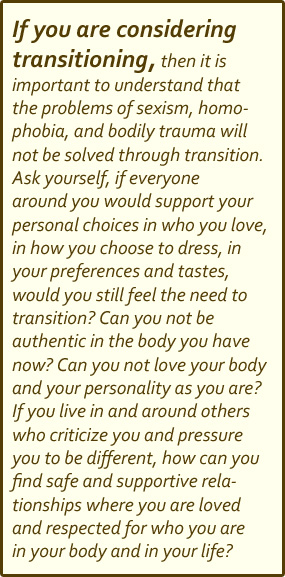 Individuals who have transitioned and those that have detransitioned have stressed that transitioning does not relieve the dysphoria that prompted them to transition. Transitioning does not alleviate the sexism that constrains how certain forms of behaviors, preferences, interests, and tastes are associated with very stringent gender roles. To the contrary, stringent gender roles are now upheld by medically transitioning bodies to make personalities match traditional notions of man and woman and sexuality that complies with heterosexual norms. For others, transitioning perpetuates an industry of body modification that celebrates objectification, some of it driven by a porn industry that eroticizes inequality. Transitioning gives power to a profit-seeking pharmaceutical industry to define and manipulate the human body to fit into cultural ideals. And it spreads like wildfire a practice that sidesteps decades and decades of feminist work towards sex equality. When young girls are now among those most frequently taken to gender dysphoria clinics for their inability to conform to traditional displays of femininity, it suggests transgenderism is, in part, responsible for conversion therapy and the widespread elimination of butch lesbians, what some consider a “genocide of lesbians”.
Individuals who have transitioned and those that have detransitioned have stressed that transitioning does not relieve the dysphoria that prompted them to transition. Transitioning does not alleviate the sexism that constrains how certain forms of behaviors, preferences, interests, and tastes are associated with very stringent gender roles. To the contrary, stringent gender roles are now upheld by medically transitioning bodies to make personalities match traditional notions of man and woman and sexuality that complies with heterosexual norms. For others, transitioning perpetuates an industry of body modification that celebrates objectification, some of it driven by a porn industry that eroticizes inequality. Transitioning gives power to a profit-seeking pharmaceutical industry to define and manipulate the human body to fit into cultural ideals. And it spreads like wildfire a practice that sidesteps decades and decades of feminist work towards sex equality. When young girls are now among those most frequently taken to gender dysphoria clinics for their inability to conform to traditional displays of femininity, it suggests transgenderism is, in part, responsible for conversion therapy and the widespread elimination of butch lesbians, what some consider a “genocide of lesbians”.
If you are considering transitioning, then it is important to understand that the problems of sexism, homophobia, and bodily trauma will not be solved through transition. Ask yourself, if everyone around you would support your personal choices in who you love, in how you choose to dress, in your preferences and tastes, would you still feel the need to transition? Can you not be authentic in the body you have now? Can you not love your body and your personality as you are? If you live in and around others who criticize you and pressure you to be different, how can you find safe and supportive relationships where you are loved and respected for who you are in your body and in your life?
Do you really want to give full power over defining and maintaining your gender to a lifetime of medical management? A consent form acknowledging a litany of dangers to your body? Do you really want to be tokenized by liberal doctors and therapists who are willing to convince you that you were ‘born in the wrong body’ and take a hefty fee for ‘treating you’? Do you have painful experiences that have caused you to feel uncomfortable in your body and, if so, can you find gentler, more self-loving ways to experience healing? Are your friends and social networks focused on supporting you to become your best, most intelligent, compassionate, reflective and critical self? And if so, why would transitioning your body be a necessary part of this?
If you are a liberal supporter of transition, consider carefully whether you really want to celebrate a culture of reinforcing gender norms, heterosexism, medical management and sexual objectification. Is your support not also a form of tokenization? The first step in committing any act of violence against any person or group is to turn them into an object.
If you are wanting to be an ally to an oppressed minority, then support solutions that undo sexist gender roles, homophobia, the objectification of bodies, and the domination of the pharmaceutical industry in defining and controlling gender. Support women and girls to realize their full potential beyond traditional notions of femininity. Support all human beings to become better human beings, beyond how their accessories match their genitals.
With heartfelt thanks to Jeanne Neath for many helpful comments, insights, and suggestions.
